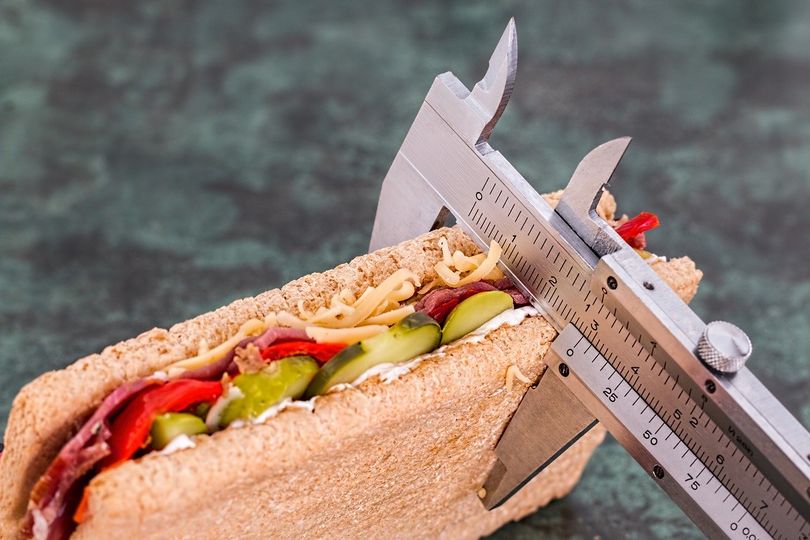
Many people ask me how many calories they should consume per day.
This depends on a few factors, such as;
Your goals
Your current weight
Your current body fat level
Your activity level
It is ideal if I know your weight and body fat levels; this allows me to work out a simple formula to find out what your Basal metabolic rate (BMR) is. Your BMR is the number of calories you burn per day if you took no activity. In other words, if you lay in bed all day, how many calories would you burn. This is the calories used up in the metabolic processes of breathing, beating your heart etc.
BMR = 370 + (21.6 X Lean Body Mass in KG’s)
Your Lean Mass is your total body weight minus your fat weight. So to work this out, you need to know your body fat percentage. Drop into us here at lifegym and we can measure this for you. Or ask any fitness instructor to do it for you if you don’t have your own Body fat scales.
For example, if your weight is 100KG and your body fat percentage is 30%, then your lean body mass is 100 minus 30%, or 70KG
Or a simpler but slightly less accurate equation is to simply multiply your weight in lbs by 10
After that we need to find out your Total Daily Energy Expenditure (TDEE)
In order to do this, we simply multiply your BMR it by your by your activity factor.
TDEE = BMR X Activity Factor
This will give you the amount of calories that will sustain your current body weight at your current activity level. If you are trying to lose weight, consume 500 calories per day less tan this figure. (If you need to gain weight, add 500 calories on to this figure)
You can decide for yourself from the list below what your activity level is.(You will know if you have gauged it correctly or not by the results you’re achieving). If you are trying to lose weight and it’s not working, simply reduce the calories by a further 500 cals per day
Activity Factors;
Sedentary (little or no exercise) = 1.2
Lightly active (light exercise/sports 1-3 days/week) = 1.375
Moderately active (moderate exercise/sports 3-5 days/week) = 1.55
Very active (hard exercise/sports 6-7 days a week) = 1.725
Extra active (very hard exercise/sports) = 1.9
FOR WEIGHT LOSS: – 500 CALS / DAY. FOR WEIGHT GAIN: + 500 CALS / DAY
So if we take an example of someone who is 12 stone, leading a moderately active life;
Their BMR will be 168 lbs X 10 = 1680 Cals
Their TDEE will be 1680 X 1.375 = 2380
So, if this person wanted to lose weight then they would need to reduce their calories to 1900 per day until they reached their target weight
Plan out your meals to keep within your daily calorie range
You should keep a food diary while doing this and write down what you eat for each meal and the calories contained in each meal. Add them up at the end of each day and adjust accordingly to make sure you’re staying in your calorie range. Most foods will have the calories written on the packaging. If you need to know the calories of a food, simply google it!
There are also some very good apps such as My Fitness pal to help you do this also.
Count everything that you eat and drink
Increasing your activity level in the correct way will also help with this
Macros Breakdown:
In general:
Fat = 30% of Daily Calories
Protein = 40% of Daily Calories
Carbs = 30% of Daily Calories
Measure Portions Accurately
Don’t use guesswork to determine portion sizes. People tend to underestimate their food portions. And there are certain foods that we tend to overeat.. Cereal is a perfect example. People often pour too much cereal into their bowl and then have to refill the bowl repeatedly.
Instead, invest in a digital kitchen scale. You don’t have to use the kitchen scale at every meal, but each time you eat a new food, weigh a portion of food so that you know exactly how much to eat. If you consume more or less than the serving size indicated on the nutrition facts label, you’ll be able to get the correct calorie count if you know exactly how many grammes were in your serving.
Be Thorough
Don’t forget to record snacks or nibbles. For example, you might visit a restaurant with a friend and choose to skip dessert in an effort to keep your calorie and fat intake low. But if you grab a fork and eat a few bites of your dining partner’s dessert, those calories count.
Instead, make a habit of writing down everything. If it goes in your mouth, it gets written down. Make this habit your rule for calorie counting. You might be surprised how the small indulgences throughout your day add up to a big change in your weight loss results.
It doesn’t matter how you count calories, whether you use high tech apps or a simple pen or paper method. Try to be as consistent as possible. An accurate number will help you get the health or weight loss results you want.




